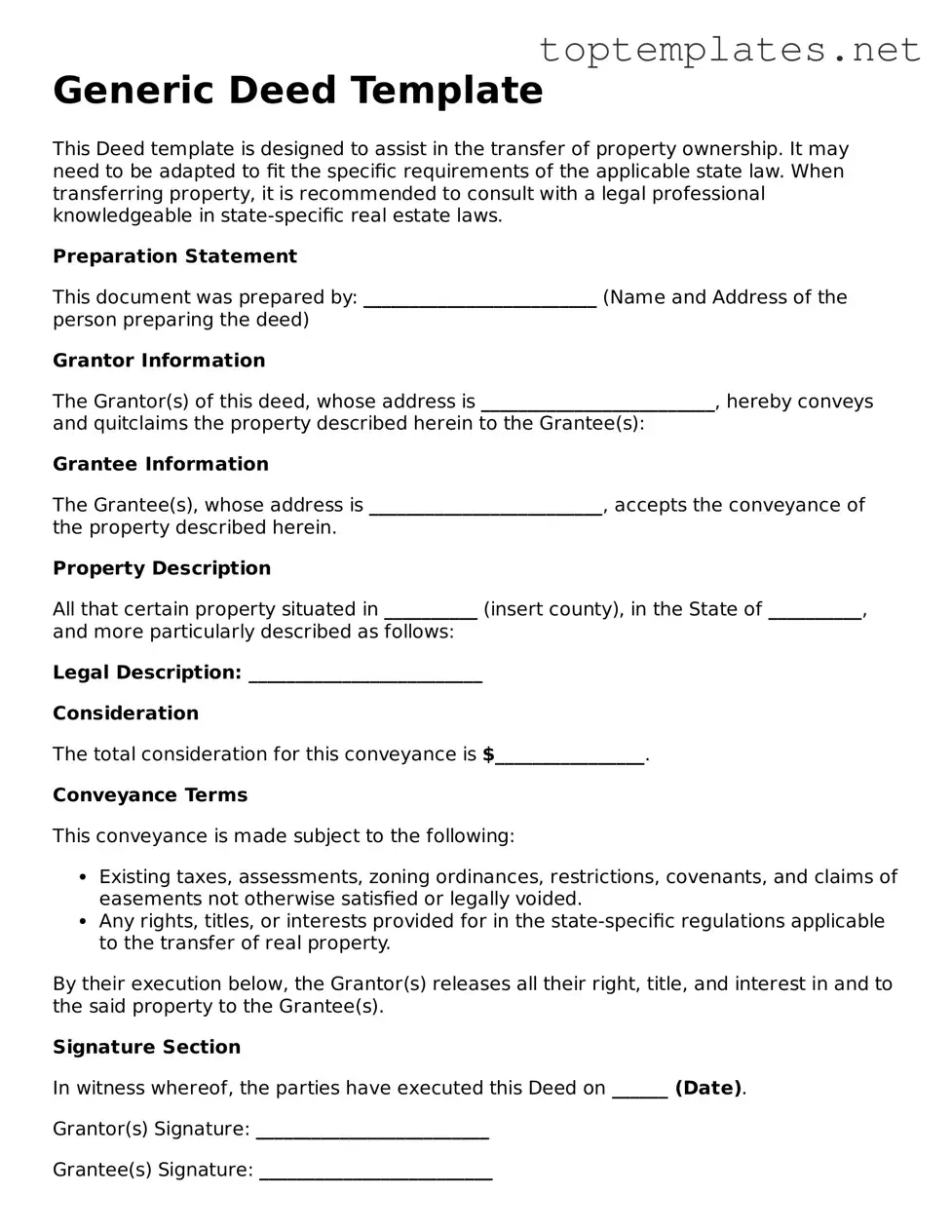Generic Deed Template
This Deed template is designed to assist in the transfer of property ownership. It may need to be adapted to fit the specific requirements of the applicable state law. When transferring property, it is recommended to consult with a legal professional knowledgeable in state-specific real estate laws.
Preparation Statement
This document was prepared by: _________________________ (Name and Address of the person preparing the deed)
Grantor Information
The Grantor(s) of this deed, whose address is _________________________, hereby conveys and quitclaims the property described herein to the Grantee(s):
Grantee Information
The Grantee(s), whose address is _________________________, accepts the conveyance of the property described herein.
Property Description
All that certain property situated in __________ (insert county), in the State of __________, and more particularly described as follows:
Legal Description: _________________________
Consideration
The total consideration for this conveyance is $________________.
Conveyance Terms
This conveyance is made subject to the following:
- Existing taxes, assessments, zoning ordinances, restrictions, covenants, and claims of easements not otherwise satisfied or legally voided.
- Any rights, titles, or interests provided for in the state-specific regulations applicable to the transfer of real property.
By their execution below, the Grantor(s) releases all their right, title, and interest in and to the said property to the Grantee(s).
Signature Section
In witness whereof, the parties have executed this Deed on ______ (Date).
Grantor(s) Signature: _________________________
Grantee(s) Signature: _________________________
Acknowledgment by Notary Public
State of ________________
County of ________________
On ____ before me, _______________________ (Notary Public Name), personally appeared _______________________, who proved to me on the basis of satisfactory evidence to be the person(s) whose name(s) is/are subscribed to the within instrument, and acknowledged to me that he/she/they executed the same in his/her/their authorized capacity(ies), and that by his/her/their signature(s) on the instrument, the person(s), or the entity upon behalf of which the person(s) acted, executed the instrument.
Witness my hand and official seal.
Signature of Notary Public: _________________________
Seal of Notary:
